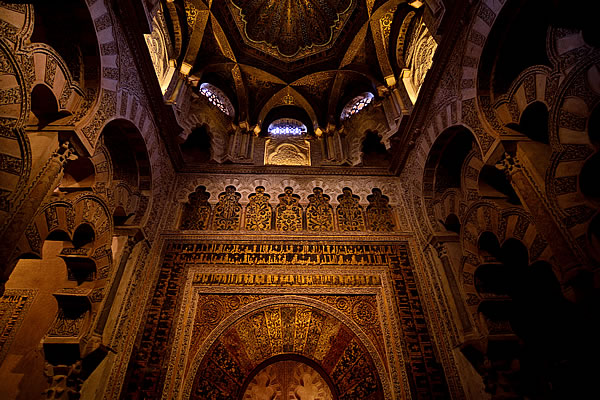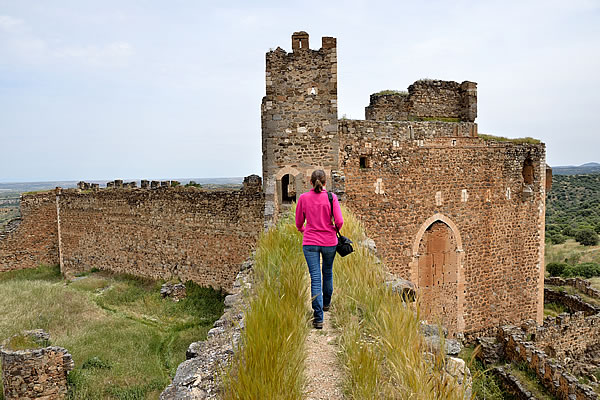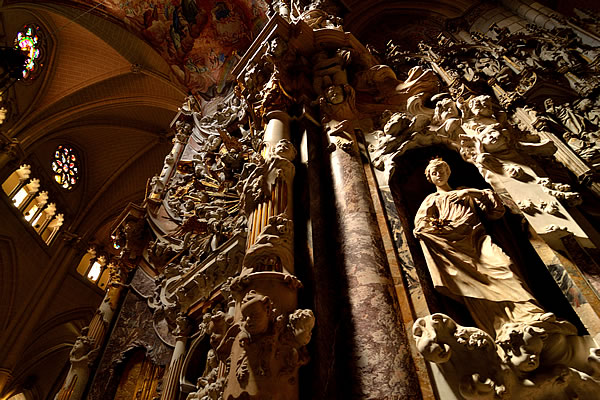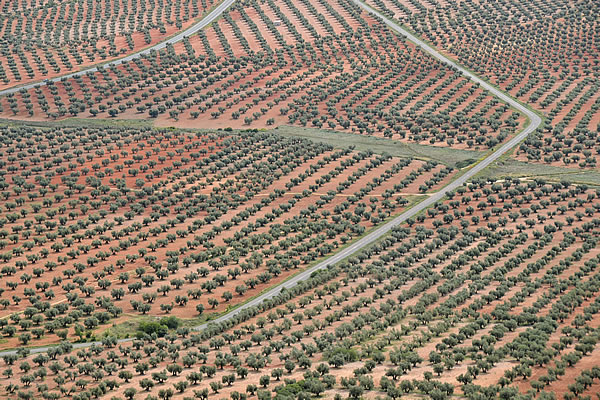English | Dutch |
|
| The land of Don Quixote | |
Alhaurin el Grande (Spain) to Madrid (Spain), May 2016
|
|
| |
|
After we replaced the rear axle shaft of our Toyota jeep near Malaga, we drove with confidence again into the mountains of Andalusia. We wanted to see something of the region’s typical white villages, and therefore decided to base ourselves in the town of Olvera. Many people opt for the more famous town of Ronda, but we hoped with Olvera to find a quieter alternative to the very touristy Ronda. We also visited the nearby towns of Zahara de la Sierra and Setinil de las Bodegas, and we hiked a stretch of the Via Verde, once built as a railroad track through the hills of Andalusia, but now transformed into a very nice walking / bike path. The 36-kilometer route between Olvera and Puerto Serrano takes you over four old viaducts and through as many as 30 small tunnels. Because of bad weather we decided to go a day earlier to Granada. The weather forecast was not too good, and unfortunately, the reality turned out to be bad too. We stayed ten full days on the city camping of Granada, and in the dry hours of these days, we tried to see as much as possible of the city, including the world famous Alhambra fortress/palace. It is a beautiful building, in Islamic style, but my god, what a lot of tourists do visit this place. Actually, it was too busy for us, and several times we asked ourselves whether we still should go to these types of tourist sites. Jokingly we sometimes say to each other that we'd better go to the countries that are part of the 'Axis of Evil', because than you can really enjoy the beauty of the places the country has to offer in real peace, without the crowds. But don’t get us wrong, the Alhambra is a beautiful complex and we are pleased that we have been there. |
|
 |
|
Graffiti art of muralist El Niño de las Pinturas in the streets of Granada |
|
After we were overrun by tourists in Granada we decided to visit the city of Cordoba right after it. This town also has a huge tourist sight, in the form of the world famous Mezquita. This building, a more than thousand year old mosque, was transformed into a church in the 13th century, after the Moors were expelled from Cordoba. The complex actually consists of a huge mosque, wherein a giant cathedral is built, right in the middle. It is a beautiful building and definitely worth a visit. The nice thing about the Mezquita is, that the entry between eight-thirty and nine-thirty in the morning is free of charge. And that are precisely also the quietest hours of the day, because the tour and school groups are still having their breakfast during this time of the day. After seeing the most visited cities of Andalusia, we felt it was time to find some quieter areas in Spain. So we went for a few days to Guadelupe, a meaningless mountain village with a fabulous monastery, which was once visited by historical great figures like King Fernando, Queen Isabel and explorer Columbus (see the article about Guadelupe). Afterwards we drove to the national park Cabañas, which lies on the border of the provinces of Extremadura and Castilla-La-Mancha. It's a beautiful hilly area with wide valleys. The area is sometimes by chauvinistic Spaniards called the Seringeti of Spain, referring to one of the world's most famous wildlife parks in Tanzania (Africa). Obviously exaggerated, but it does indicate that it is a beautiful area where it is relatively easy to see the main birds of prey that live in Spain, including the Spanish Imperial Eagle. |
|
 |
|
The interior of the Mezquita mosque in Cordoba |
|
| On the way to Madrid we made a stop for a few days in Toledo, in the heart of the land of Don Quixote. This famous story is about a man who lost his mind by reading too many chivalric romances. He starts thinking that he is a real knight, and leaves his home town under the name of Don Quixote of La Mancha (named after his birthplace) and starts wandering through the countryside of Spain, which actually is the region around Toledo. The area is not particularly beautiful, partly because of the huge numbers of olive tree plantations, but does have some beautiful castle ruins. The city of Toledo itself is also worth a visit, and has one of the most extravagant cathedrals of Spain. From Toledo is only a short drive to Madrid. We stay at the campsite in the suburb of Boadilla so we could use the metro network to the travel to/from the city centre. We have planned our visit to Madrid at the time as the final of the Champions League (soccer), a struggle that goes this year between the two superpowers of Madrid; Real Madrid and Atletico Madrid. Atletico Madrid has hired for her fans the huge sport palace of the city, to show the match, which is actually played in Milan, on big screens. Through the internet we were able to get tickets for the event, so we could witness this incredibly fun event. After a very exciting match, in which Atletico came on par just before the end of the game, rival Real Madrid won after penalty kicks; this to the dismay of the 15,000 Atletico fans in the sports palace. |
|
 |
|
Landscape around Guadelupe in the Extremadura |
|
 |
|
On the way to Cabañas National Park |
|
 |
|
Exploring the Templar castle of Castillo de Montalbán |
|
 |
|
The beautifully lit transperente in Toledo's cathedral |
|
 |
|
Olive tree plantations in the Castilla-La Mancha province |
|
| <Previous weblog> | |